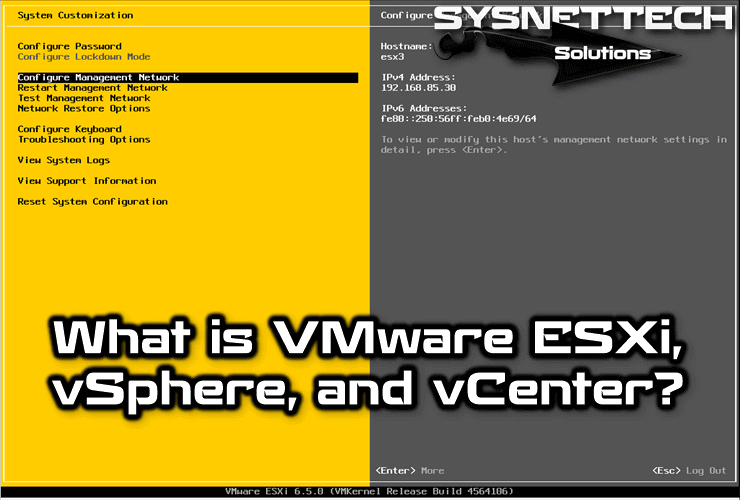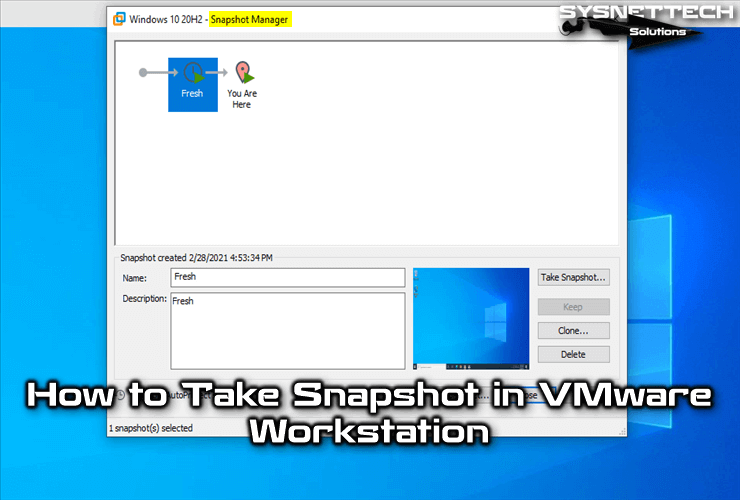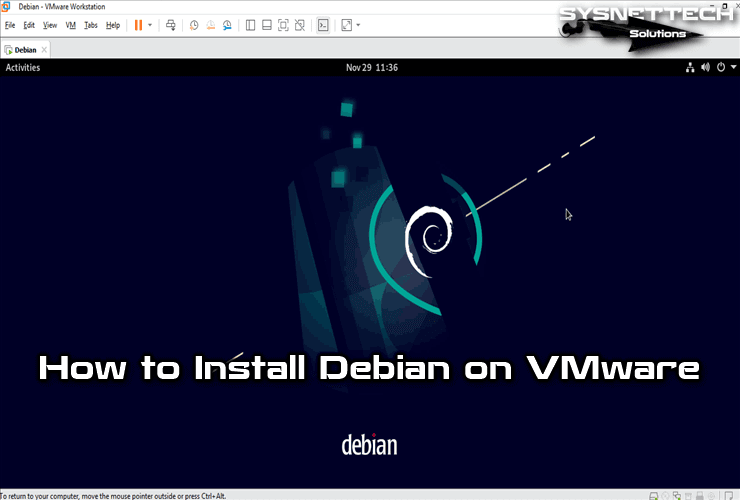In this article, we will examine how to set up Windows Vista on a new virtual machine using VMware Workstation 17 Pro virtualization software on a Windows 10 PC.
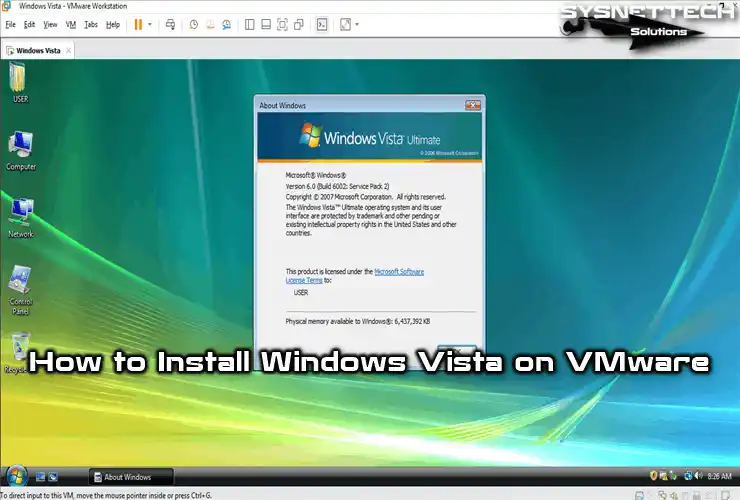
How to Set Up Windows Vista on Windows 10 using VMware Workstation 17 Pro
Officially released by Microsoft on January 30, 2007, Windows Vista is a member of the Microsoft operating system. However, this popular OS version was retired entirely on April 11, 2017.
The primary purpose of developing the Microsoft Vista operating system was to fix some security issues in Windows XP. The Aero feature was developed for the first time with this operating system. Also, the biggest notable feature of Vista was the Sidebar feature.
Since Windows Vista Ultimate 64 Bit is an old operating system, you can install and run it on the virtual machine by using the Workstation program without having to install this system on your physical computer.
If you have not installed the VMware software program on your Windows computer before, you can browse our related article by clicking here. Or if you are using one of the Linux distributions such as Ubuntu, you can refer to our article here.
How to Create a New Virtual Machine for Windows Vista
After installing VMware Pro on your computer, open the program and follow the steps below to create a new virtual computer for the Vista virtual system. After creating and preparing the VM, all you need is an ISO image file.
Download the ISO file of the Windows Vista Ultimate x64 SP2 operating system for VM Workstation by clicking here, and then follow the steps below.
Step 1
When you run VMware Workstation 17 Pro, click on the Create a New Virtual Machine option from the options you see on the homepage and select Custom (Advanced) in the wizard window that opens, and click the Next button.

Step 2
Configure the hardware compatibility of the virtual machine as Workstation 17.x. If an older version of the VMware program is installed on your host, you will see the corresponding version in Hardware Compatibility.
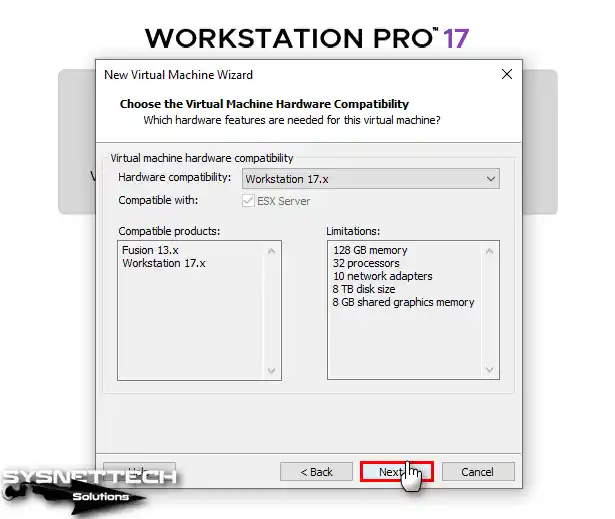
Step 3
In this window, you need to choose how you want to install the Guest operating system. For more detailed configuration, check I will install the operating system later option and click Next.
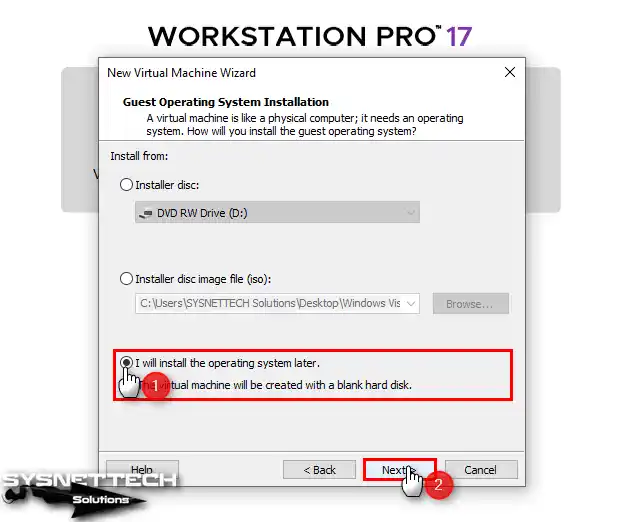
Step 4
In the Guest operating system type selection window, first, select the Microsoft Windows platform you will install, then Windows Vista x64 Edition from the Version section and click Next.
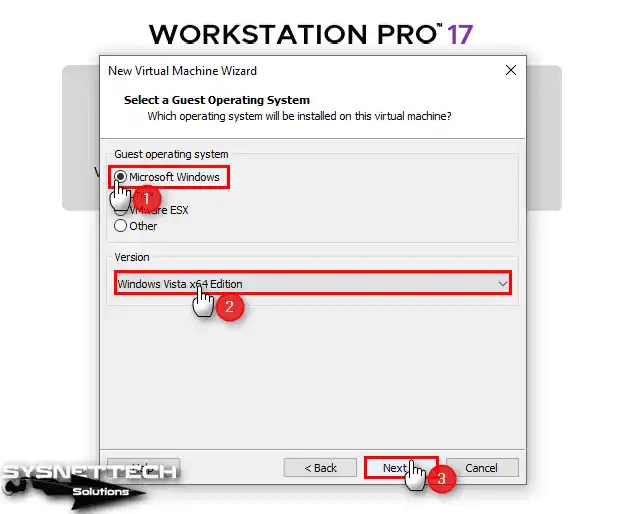
Step 5
In the naming and positioning of the virtual machine window, type a name to be displayed in the VM library and select the location where you will install it. Here, we recommend installing the VM on an external hard drive for performance reasons.
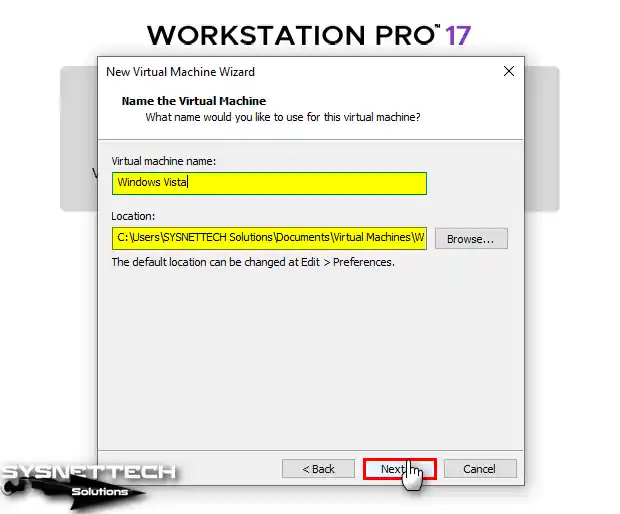
Step 6
Since Vista is an old system as the firmware type, mark the BIOS and click Next.
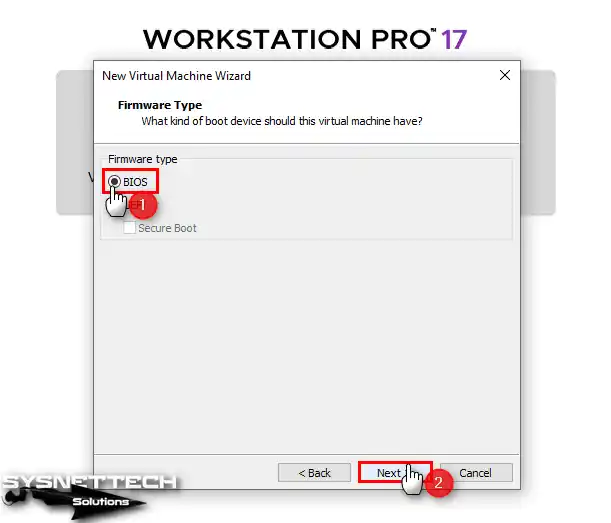
Step 7
Configure as many processors and cores as your host will support on your guest virtual computer. The point you should pay attention to here is whether old operating system versions support more than one processor number. Therefore, in old systems, usually set the number of processors to 1, and the number of cores in the same way, determine a value suitable for your host’s processor hardware.
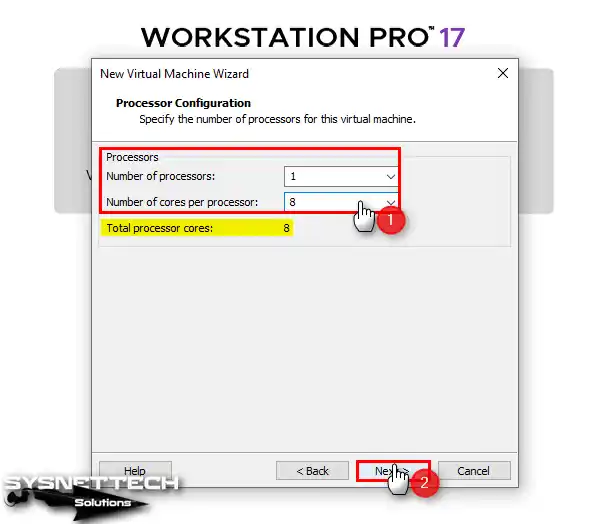
Step 8
Likewise, set a RAM value for the VM according to the RAM capacity available on your host and click Next to continue.
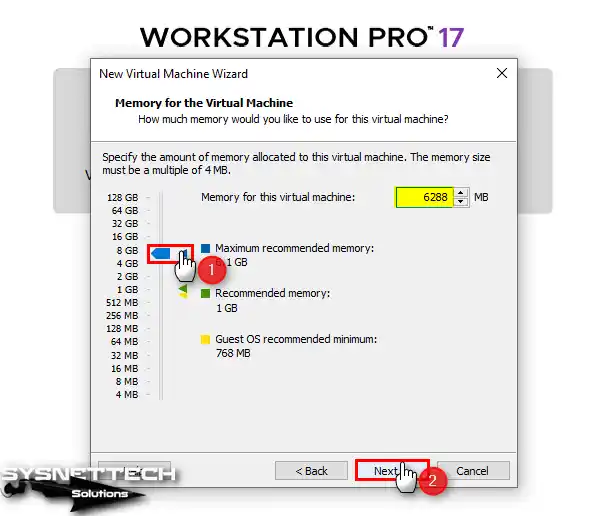
Step 9
As the network type, continue with NAT selected by default. You can use the Bridged network type to get an IP address from the IP block your host is using.
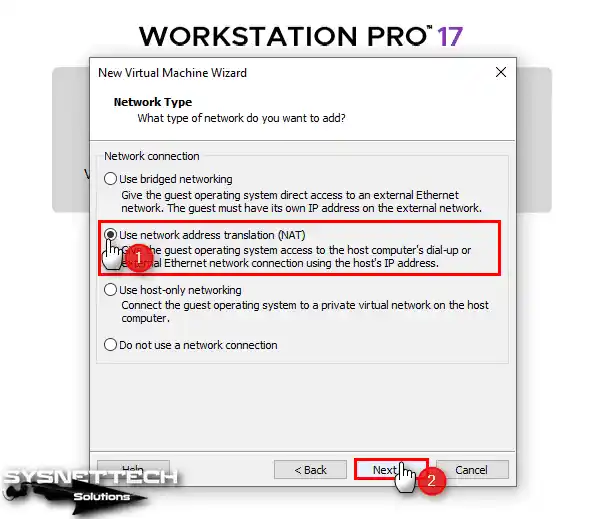
Step 10
In the I/O Controller window, you need to select the type of controller you will use for SCSI virtual disks. Here, proceed with the LSI Logic option selected by default.
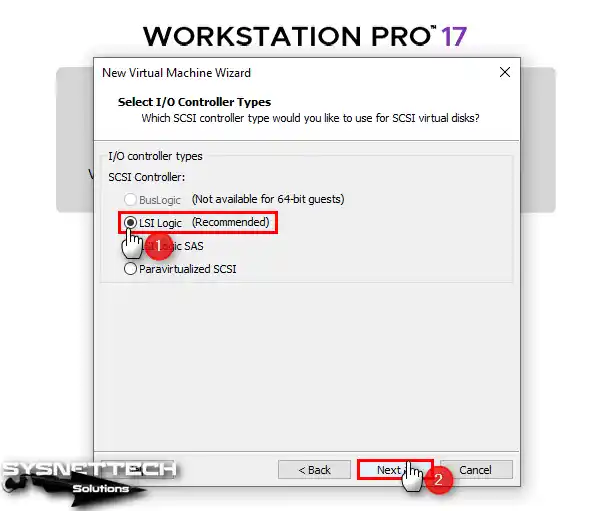
Step 11
In the disk type selection window, you can select IDE, SCSI, and SATA, but the NVMe disk type is inactive because it is a new technology and is not supported by older operating systems. Select SATA as the most suitable disk type and click Next.
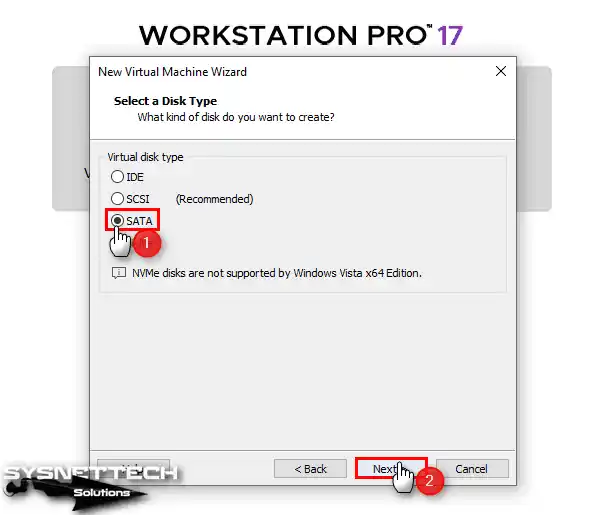
Step 12
Since you will be doing a system installation on the virtual machine from scratch, you need to create a new disk for the VM. So, in the Select a Disk window, check the Create a New Virtual Disk option and click Next.

Step 13
In the disk capacity determination window, use the recommended 50 GB size for Windows Vista, when you specify a lower capacity, you will see a warning in the disk configuration of the operating system installation phase.
Also, check the Store virtual disk as a single file option and click Next to back up the virtual disk file of the VM as a single file type on your host.
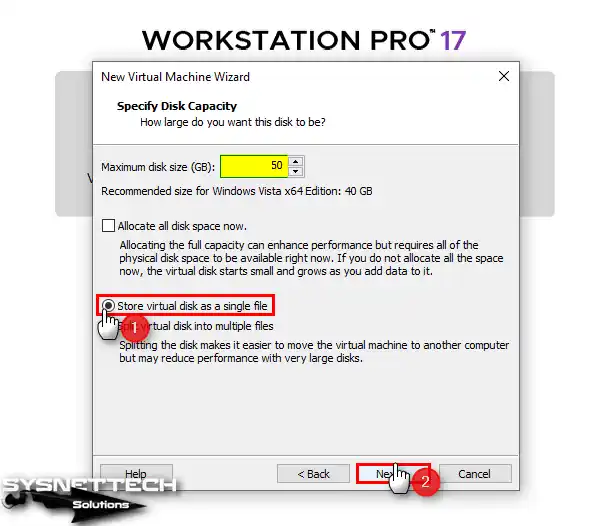
Step 14
You can configure the location where you want to back up the virtual disk file from this window. If you make the installation location of the VM on an external HDD, the virtual disk file will also be backed up to that location. Additionally, you can change the name of the virtual disk to be stored.

Step 15
Click the Customize Hardware button to make any changes in the summary window of your virtual computer.

Step 16
To enable the virtualization feature so that the Vista VM can work more efficiently, select Processors from the Device section and tick all the options in the Virtualization Engine tab on the right.
- Virtualize Intel VT-x/EPT or AMD-V/RVI
- Virtualize CPU Performance Counters
- Virtualize IOMMU (IO Memory Management Unit)
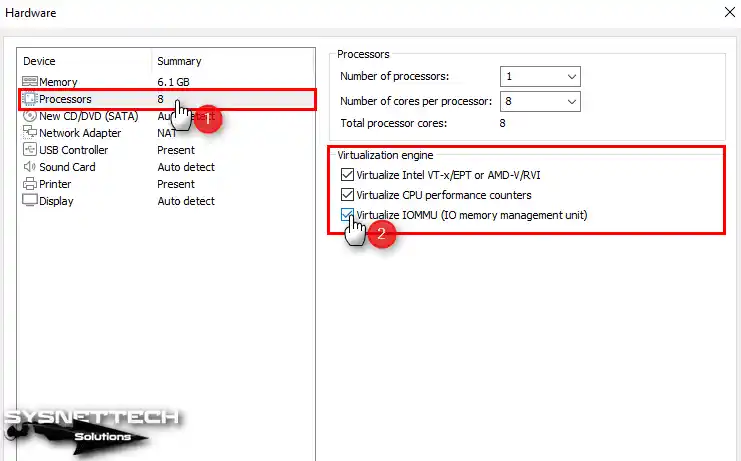
Step 17
Now, click on the CD/DVD device to add the ISO file to the VM and enable the Use ISO Image File option in the Connection section and click the Browse button.
Select the Windows Vista Ultimate 32/64 Bit SP2 ISO file that you downloaded to your computer, add it to the VMware program by clicking the Open button, and close the hardware window of the VM.
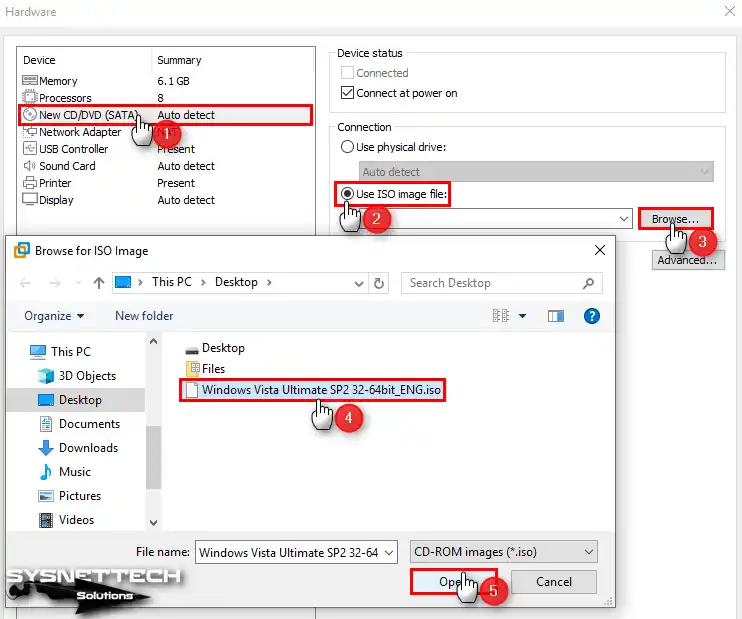
Step 18
Check that the compatibility mode is USB 2.0 in the settings of the USB Controller device.
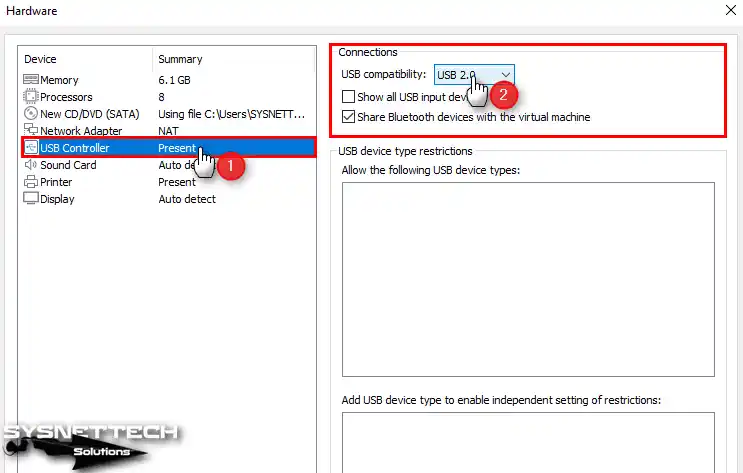
Step 19
By increasing the graphics memory of the virtual computer, you can get more efficiency from the programs you will use on the VM. Select the display device and set a value equal to half the amount of RAM you have assigned to the VM from the Graphics Memory section.
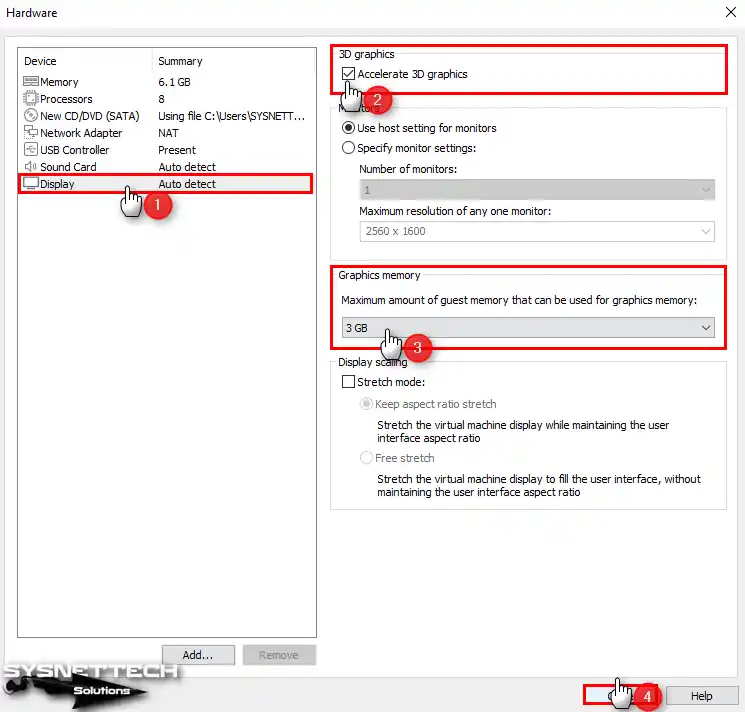
Step 20
After making all the necessary preparations to install Windows Vista with VMware, click the Finish button.

Step 21
When the virtual PC you created on Workstation Pro is listed automatically, click the Power on this virtual machine button to run it.

How to Install Windows Vista
After completing the virtual machine creation processes, you can start the installation by running the VM. From this step, you need to proceed as if you are installing it on a physical computer. So, the Windows installation here will be done with the ISO image file.
Step 1
Press the Enter key on the Windows Vista x64 Setup option on the Windows Boot Manager screen.

Step 2
For Windows Vista, select the system language, time, and currency, as well as the keyboard layout, and click Next.
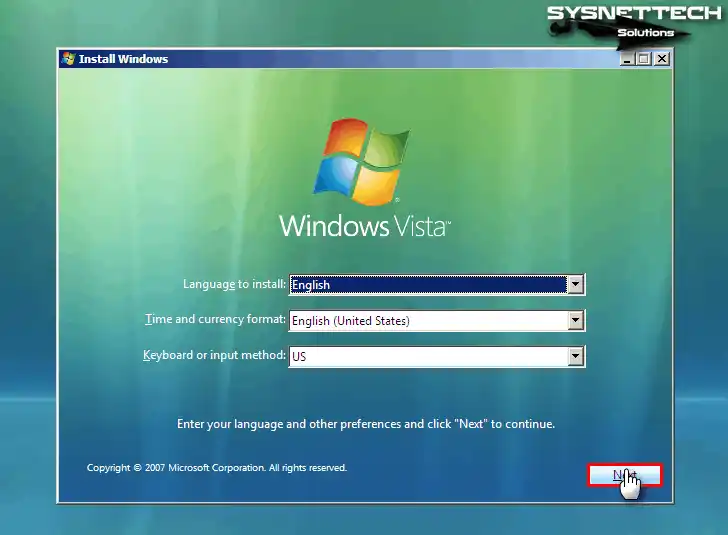
Step 3
Click the Install Now button to start the operating system installation.

Step 4
You need to select the architectural type of the operating system you want to install. If you are using other ISO files, you may not see the x86 or x64 architecture types here. Since you configured the Guest operating system version as x64 when creating the virtual computer, select the x64 architecture type here and click Next.
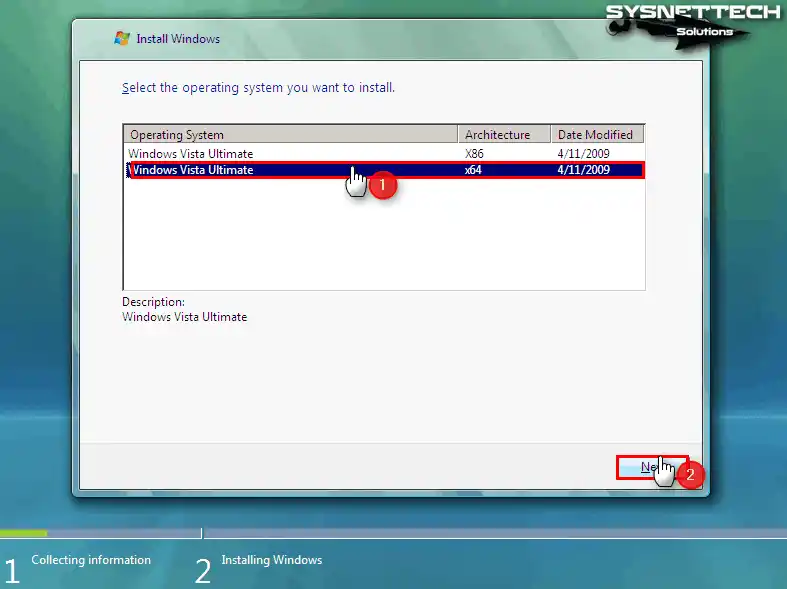
Step 5
Check I accept the license terms to accept the license agreement of the Windows Vista Service Pack 2 system and click Next.
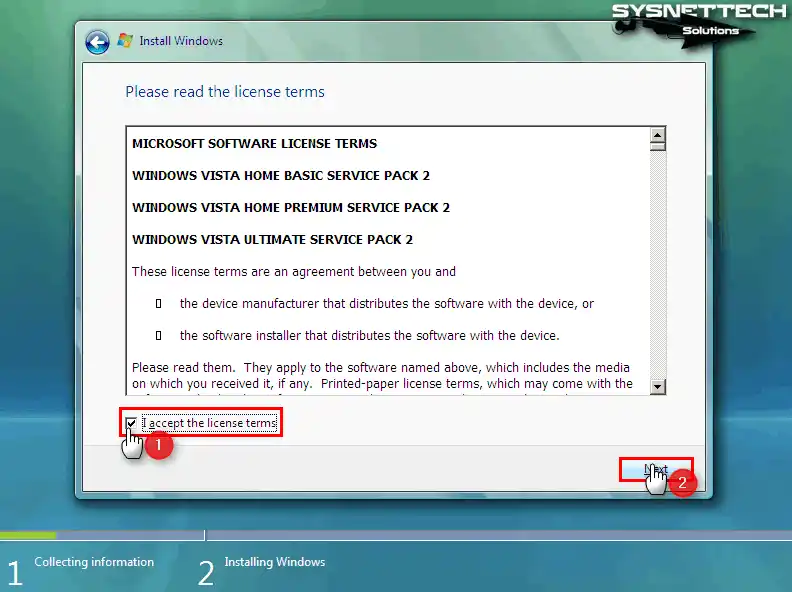
Step 6
As an installation type, if there was another system installed on your system before, you could upgrade your system with the Upgrade option in this window. However, since you will be installing from scratch on the VM, click Custom (Advanced).
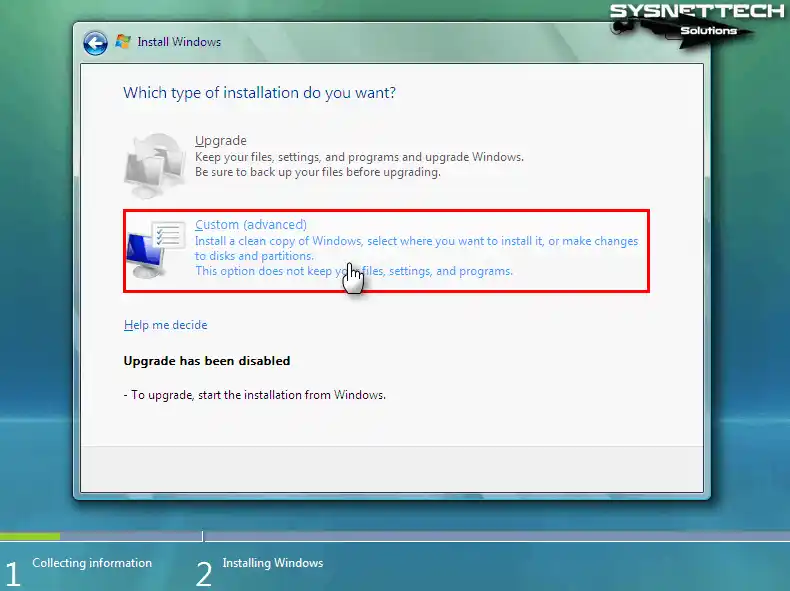
Step 7
Click Drive Options to configure the virtual disk you added to the VM. Click New and then Apply to edit the unallocated space on the disk.

Step 8
After editing the virtual disk, select Disk 0 Partition 1 and click Next.
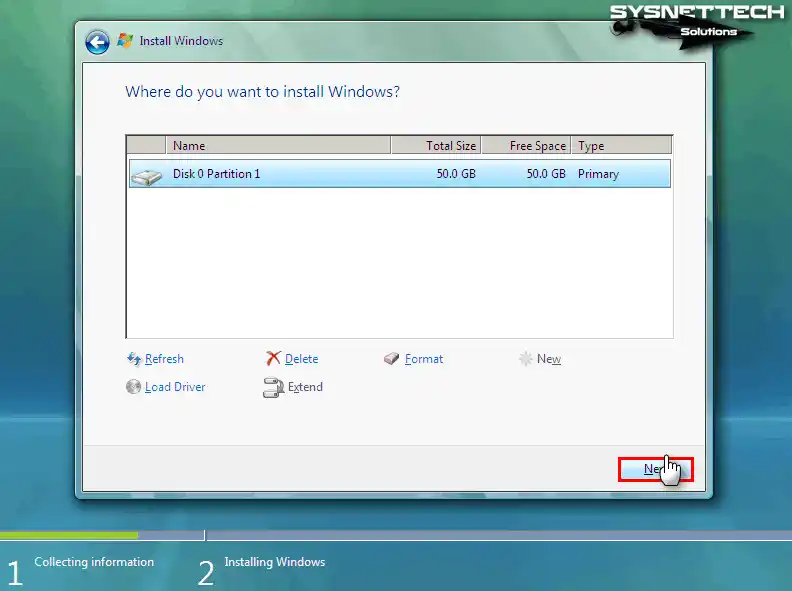
Step 9
Wait while the setup wizard expands the Windows files.
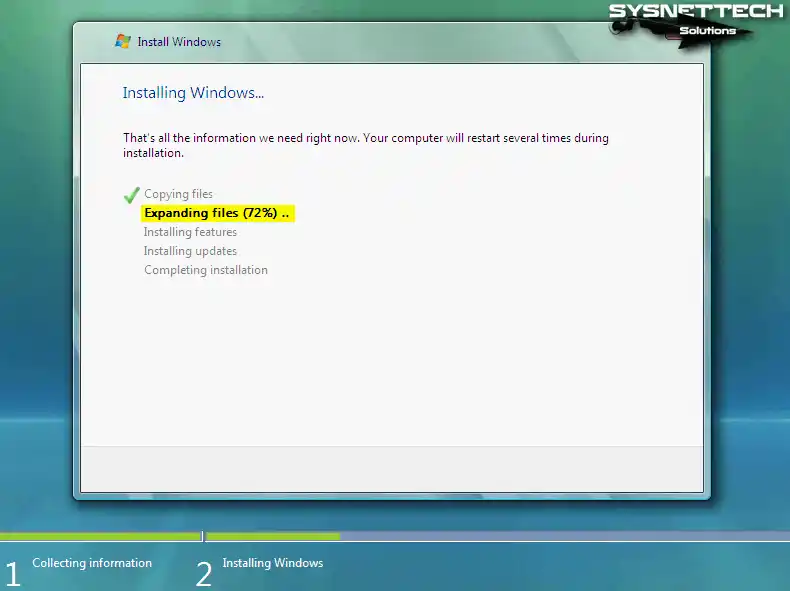
Step 10
Your system will reboot according to the set automatic time for installation, but click the Restart Now button to reboot directly.
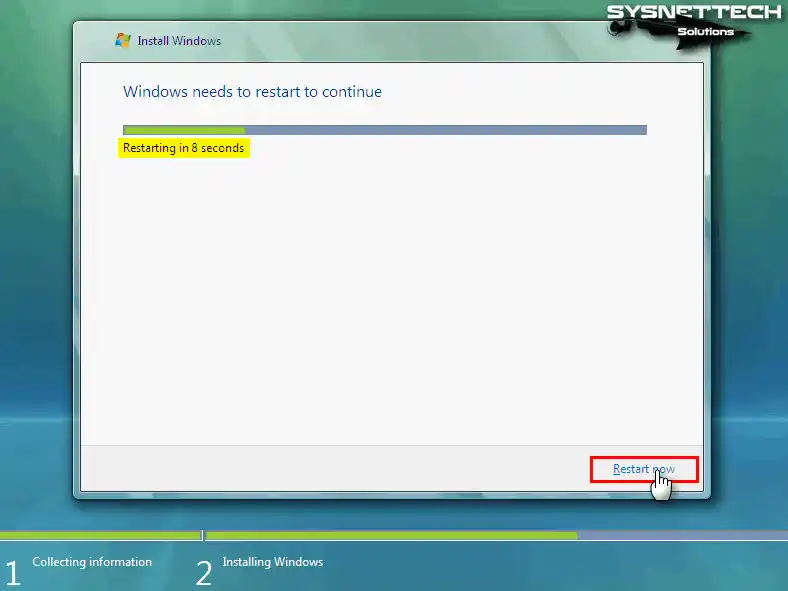
Step 11
Configure a new username and password in the window that opens when your system restarts. You can also change the user image you want to use in your user account.
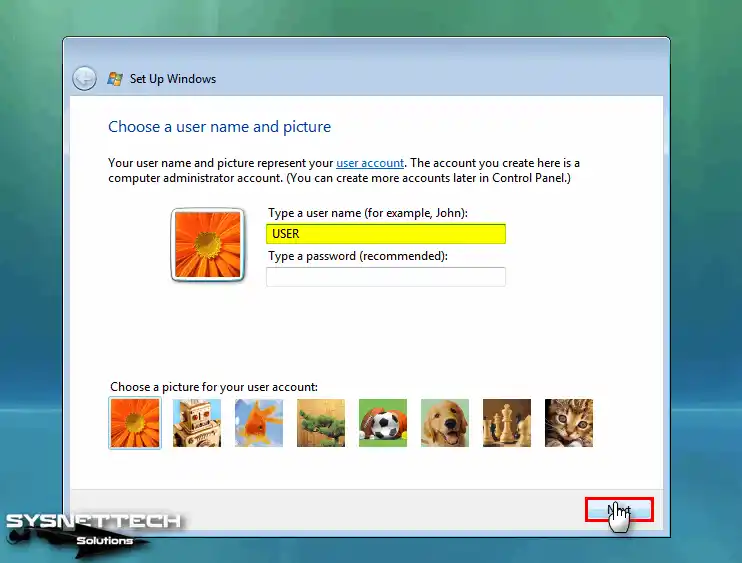
Step 12
Specify and type the computer name for the virtual PC, you can also change the desktop background in this window. In addition, you can configure the desktop background you changed later via the Control Panel.

Step 13
Select Use Recommended Settings to protect your Windows system from external threats and continue.
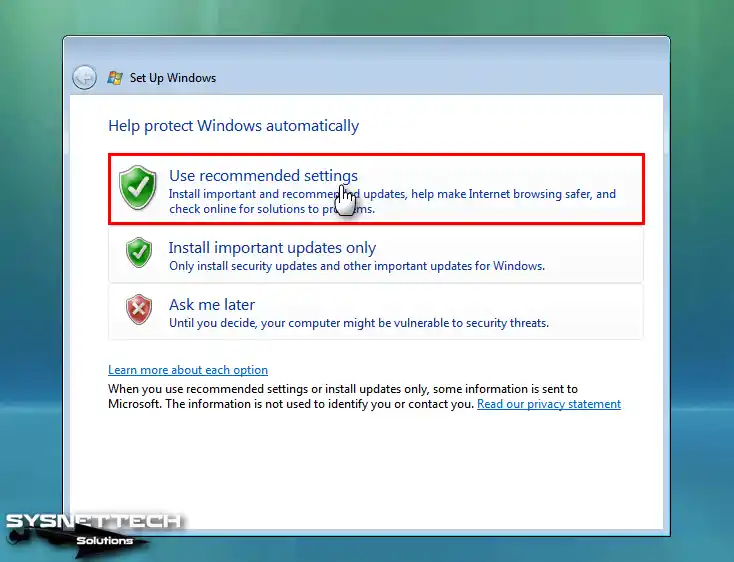
Step 14
Select the region setting for the clock settings of your Vista system according to where you live and make sure that the system time is correct.
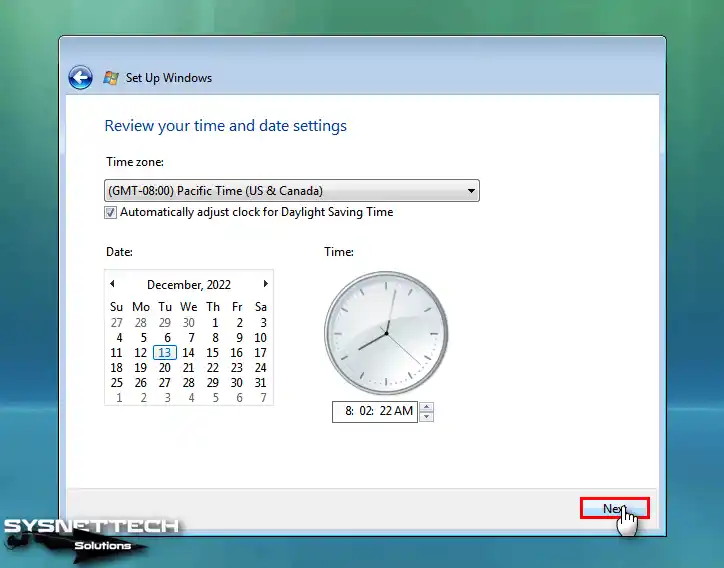
Step 15
You can configure the physical location of your computer as Home, Work, or Public Location.
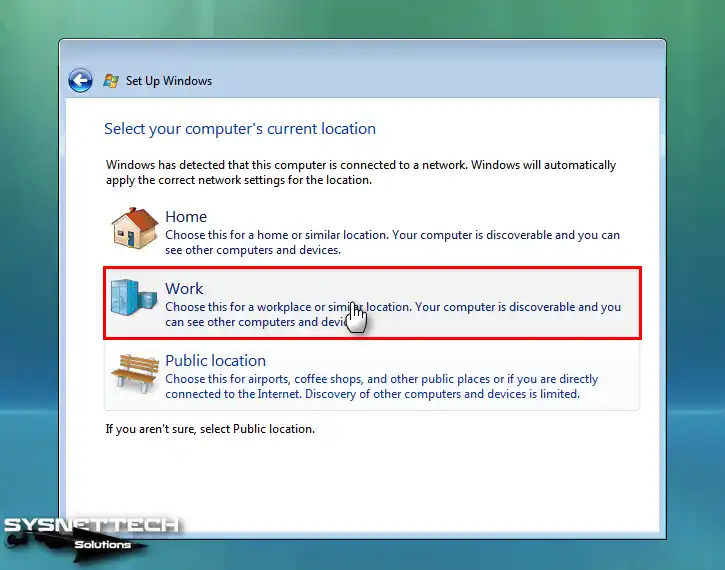
Step 16
After making the necessary system settings, click the Start button and wait for your system to boot.

Step 17
Wait while Windows checks your computer’s performance.

Step 18
After installation, the Windows Vista desktop screen will look like the image below!
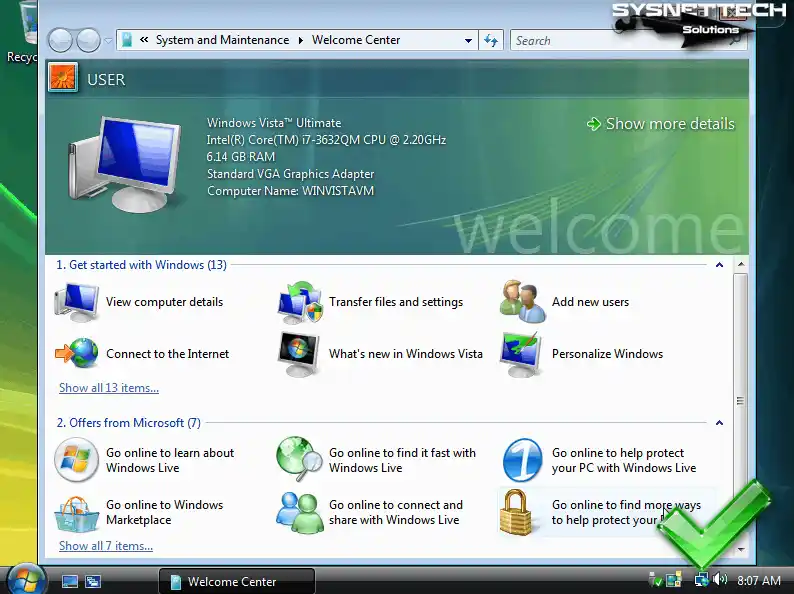
How to Install VMware Tools
After installing Windows or other platform operating systems with VMware, VMware Tools must be installed in order to use the screen resolution, file sharing, and host’s devices.
Before installing VMware Tools, open Device Manager on your virtual system and check if the drivers for both the video card and other devices are installed.
Step 1
Click VM / Install VMware Tools from the tool menu to install the drivers for your Vista virtual system. You may get the error in the image below because the VM Tools version supported by the virtualization program no longer supports this system. To fix this issue, you need to download version 11.0.6 of VM Tools.
If the VM Tools setup wizard does not open automatically on the system or opens too late, open My Computer and double-click on the CD/DVD icon.
Setup cannot contine. This program requires that you have Windows 7 Service Pack 1 (SP1) or greater installed in this virtual machine.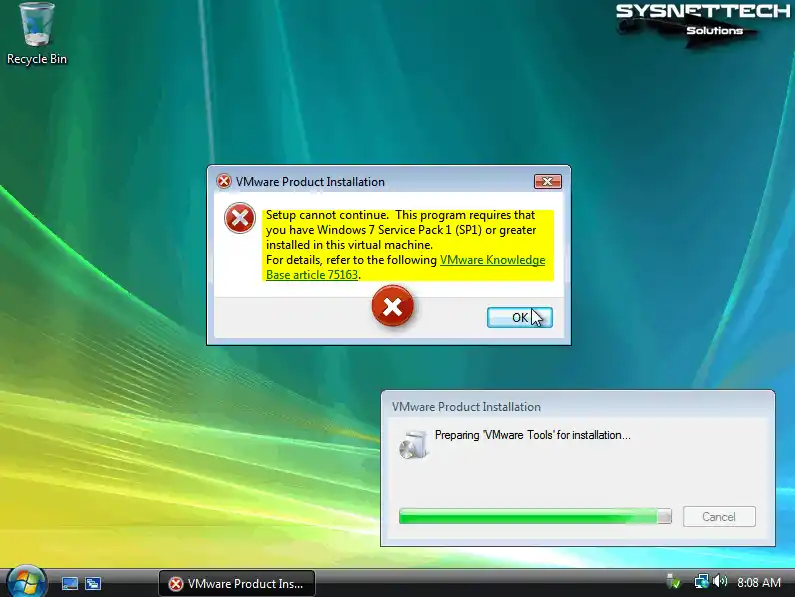
Step 2
To manually download an old version of VMware Tools (11.0.6), visit the address below and download the ISO image file to your computer.
VMware Tools 11.0.6: https://packages.vmware.com/tools/releases/11.0.6/windows/

Step 3
Click VM / Removable Devices / CD/DVD (SATA) / Settings from the menu to add the VMware Tools 11.0.6 ISO file to the virtual machine. Click the Browse button to add the ISO file in the Virtual Machine Settings window.
Select the VMware-Tools-Windows-11.0.6-15940789.iso image file and click the Open button.
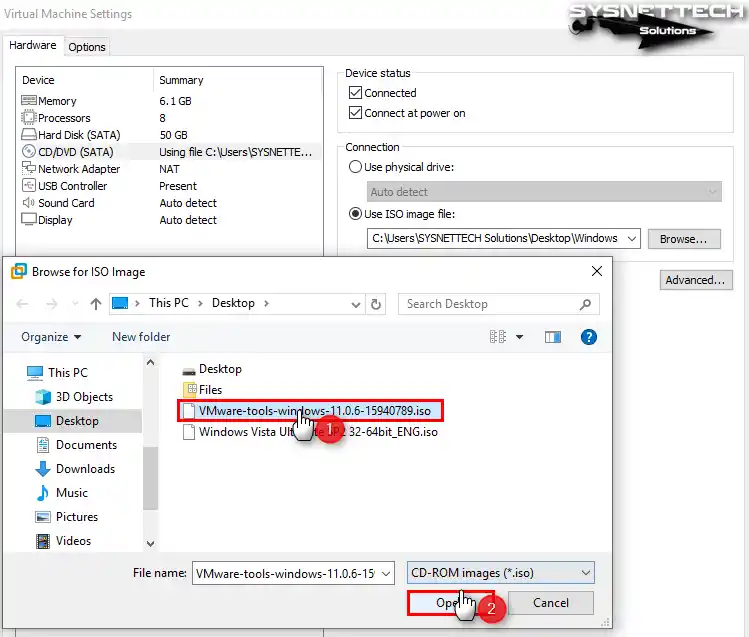
Step 4
Double-click the DVD icon on My Computer again and start the installation wizard. Click Next when the virtual machine tools setup wizard opens.
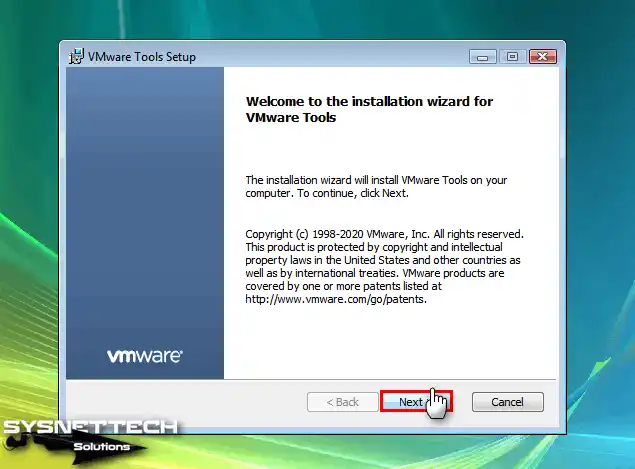
Step 5
Select Complete as the installation type and click Next.
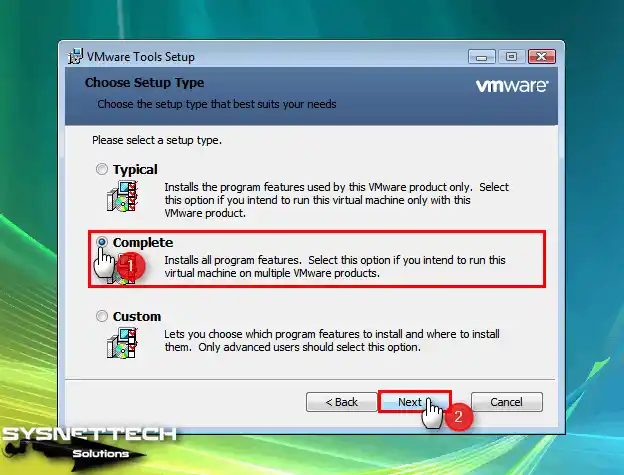
Step 6
Click the Install button to start installing VM Tools for the Vista virtual machine.
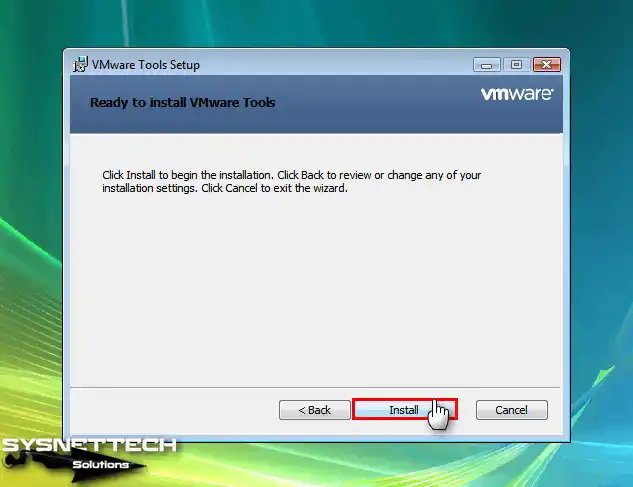
Step 7
Wait while the necessary drivers for the virtual PC are installed.
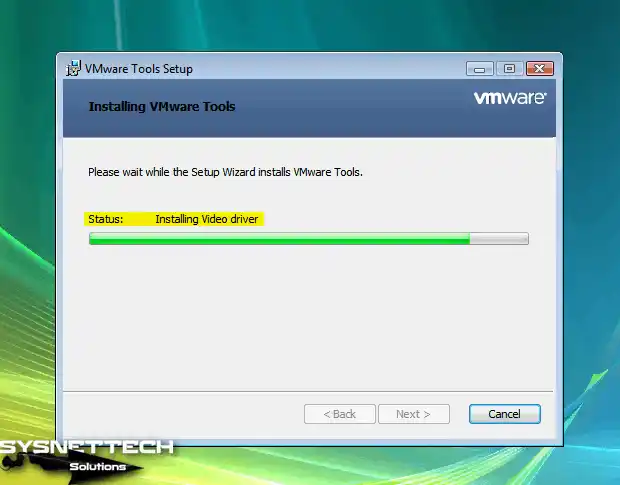
Step 8
After completing the VM Tools installation, restart your virtual system by clicking the Yes button for the changes to take effect and the drivers to be configured.
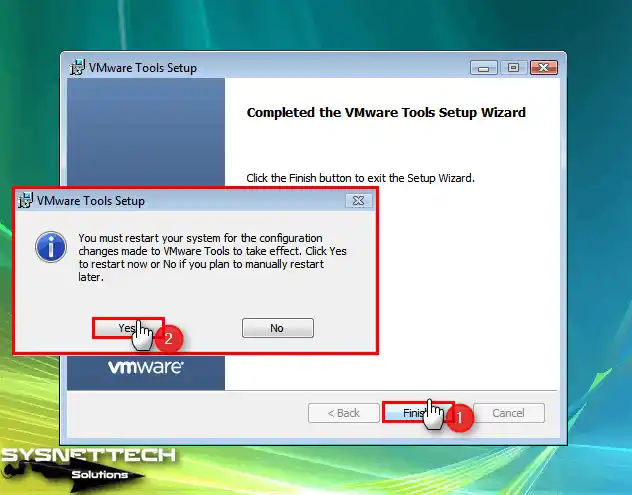
Step 9
After your guest machine is turned on, click View / Full Screen to use the screen resolution in full-screen mode or View / Fit Guest Now to fit full screen.
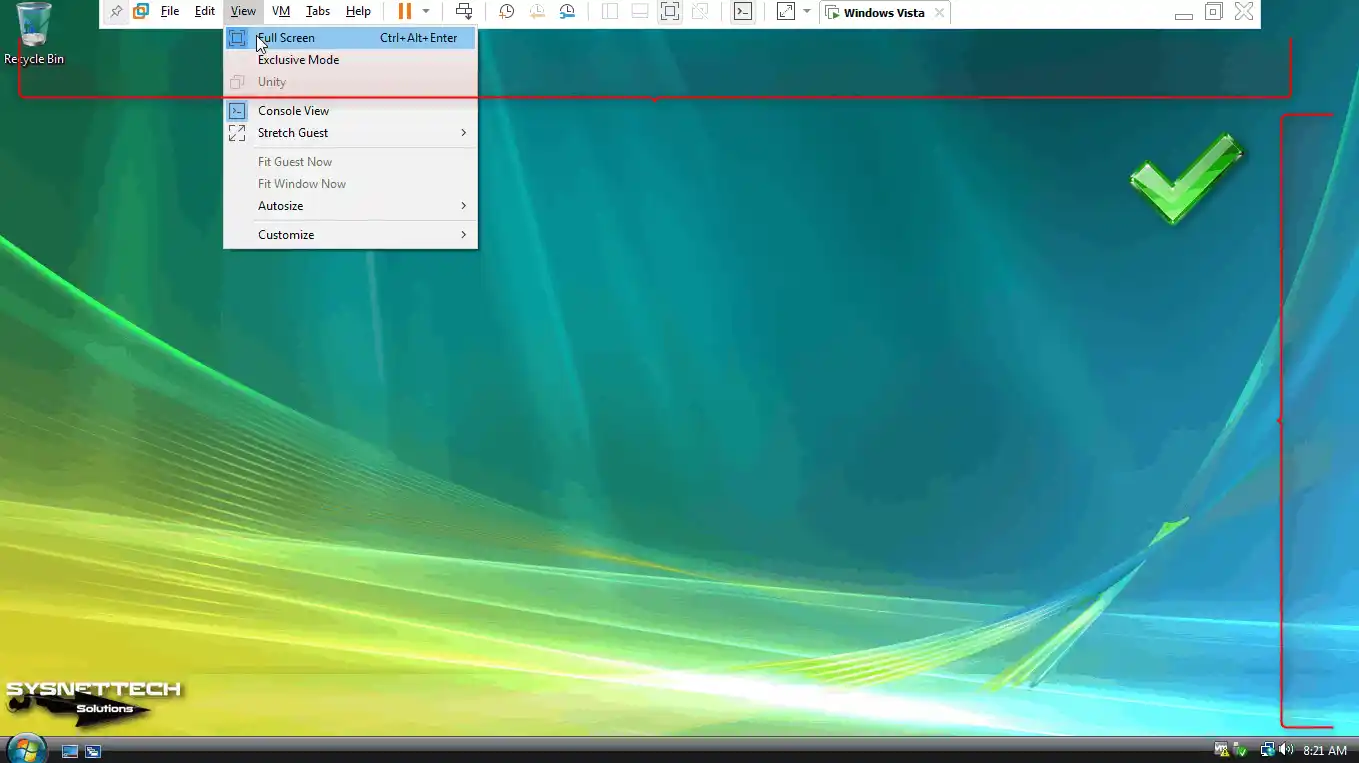
Step 10
At the same time, you will be able to see that the process is successful when you transfer files between the virtual machine and the host using the drag-and-drop method.

How to Configure Shared Folder
Creating Shared Folder for the Windows Vista machine is simple and easy, but you need to do this after installing VM Tools. Then, you can create a shared folder share between your host and your VM using the Shared Folder structure of the VMware program.
Step 1
Click VM / Settings from the menu to enable the Shared Folders feature on your virtual PC.
Click Shared Folders in the virtual machine settings window, and then check the Always Enabled option under Folder Sharing.
Then, check the Map as a network drive in the Windows guests option to use the folder you will share as a network drive, and then click Add and click Next in the wizard.
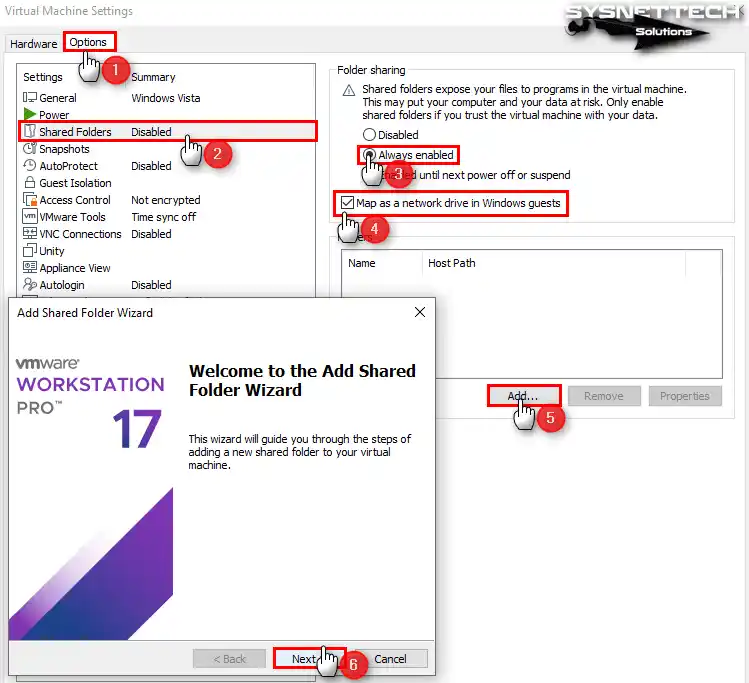
Step 2
Click the Browse button to select the folder you have specified on your host and select the location.
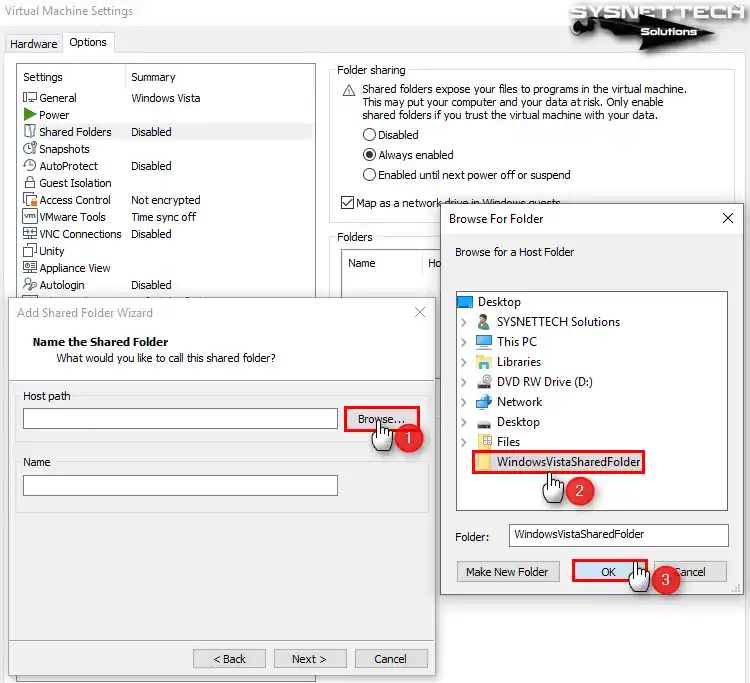
Step 3
To enable sharing, check the Enable this share option and click Next. After checking the location of the folder on the host, click the OK button to close the VM settings window.
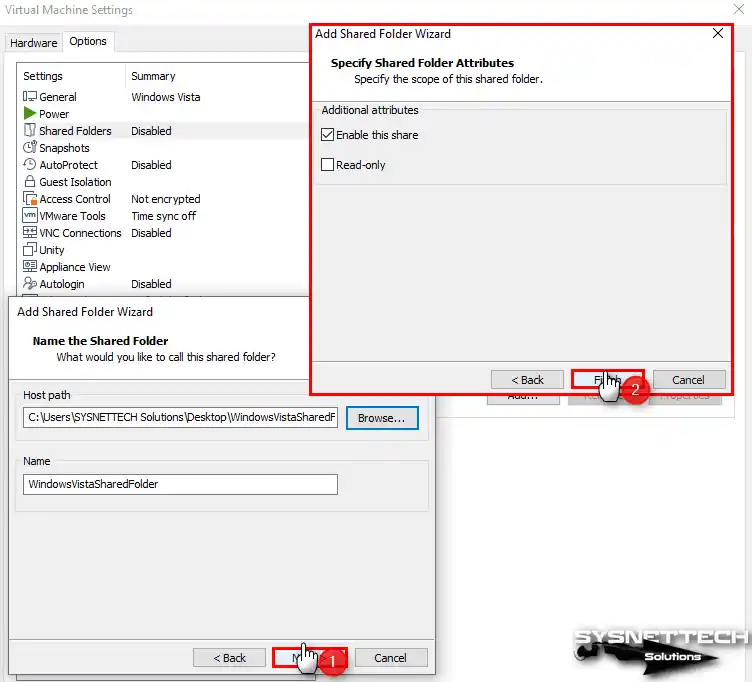
Step 4
Check that Shared Folder is added as a network drive on my computer.
Make sure vmware-host is visible when you check Shared Folder over Network/Network location. If vmware-host appears on the network, it means that Shared Folder is working fine.
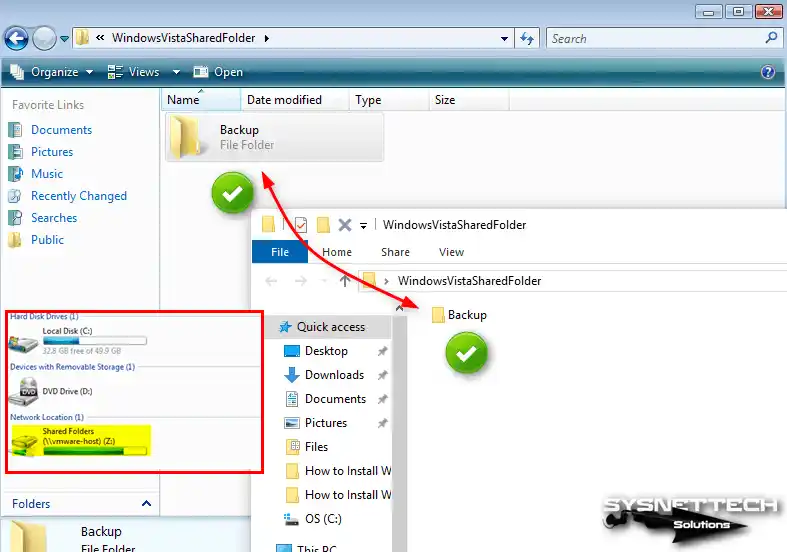
How to Use USB Flash Memory
You can use your USB 2.0 flash drives or storage devices to make larger file transfers in your Windows Vista virtual system.
Step 1
First, insert your flash memory into one of the USB ports of your host PC and create a folder in it as an example.
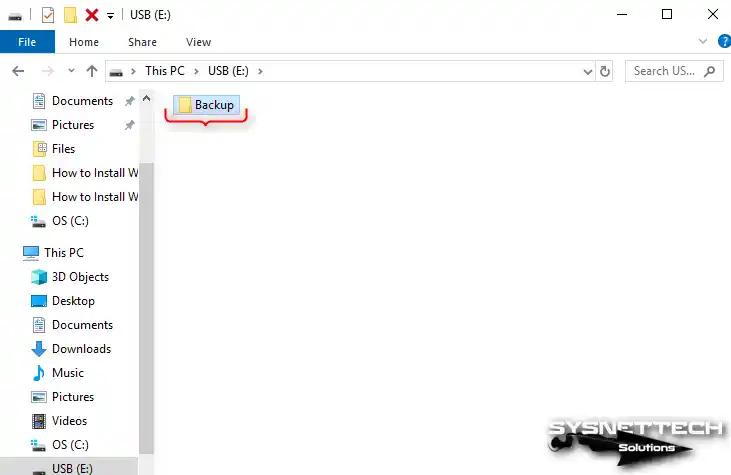
Step 2
To connect your USB disk to your virtual operating system, click VM / Removable Devices / Name of your USB / Connect from the Workstation Pro tool menu.

Step 3
After you insert your USB stick into the virtual machine, its drivers will be installed automatically and you will be able to access your disk shortly after.
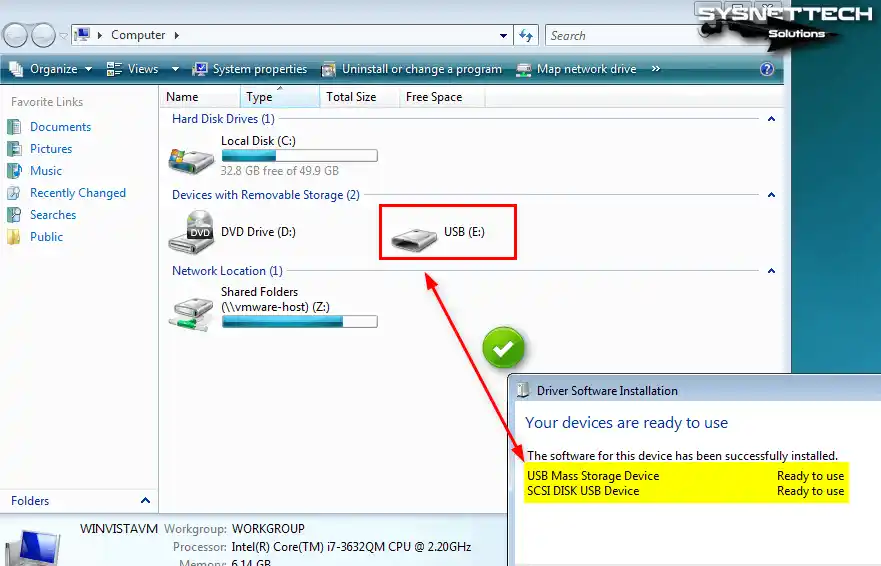
How to Delete the Virtual Machine
If you want to completely delete your Vista VM from your host system, open Workstation Pro and right-click on it on the left panel.
Click on the Manage / Delete From Disk option from the drop-down options, and then click Yes to confirm the complete deletion from the disk in the “This action is irreversible” warning window.
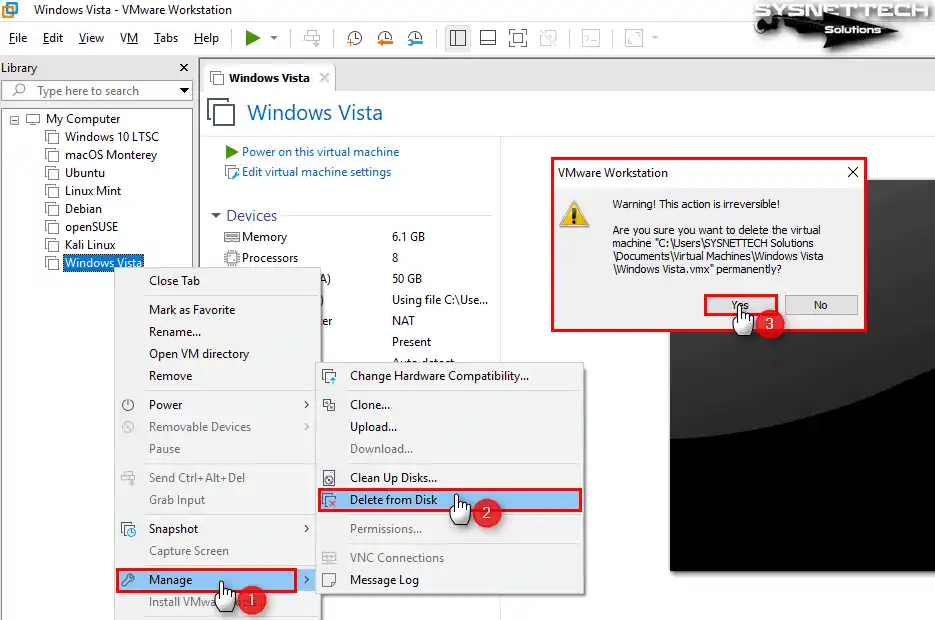
Video
Installing Old Versions
Related Articles
♦ How to Install Windows 7 with VMware
♦ How to Install Windows 10 with VMware
♦ How to Install Windows 8 with VMware
♦ How to Install Windows XP with VMware
♦ How to Upgrade VMware Workstation

